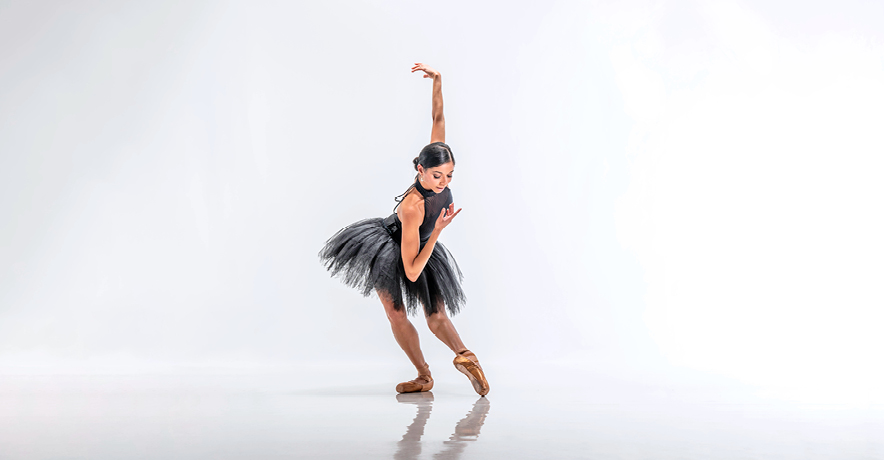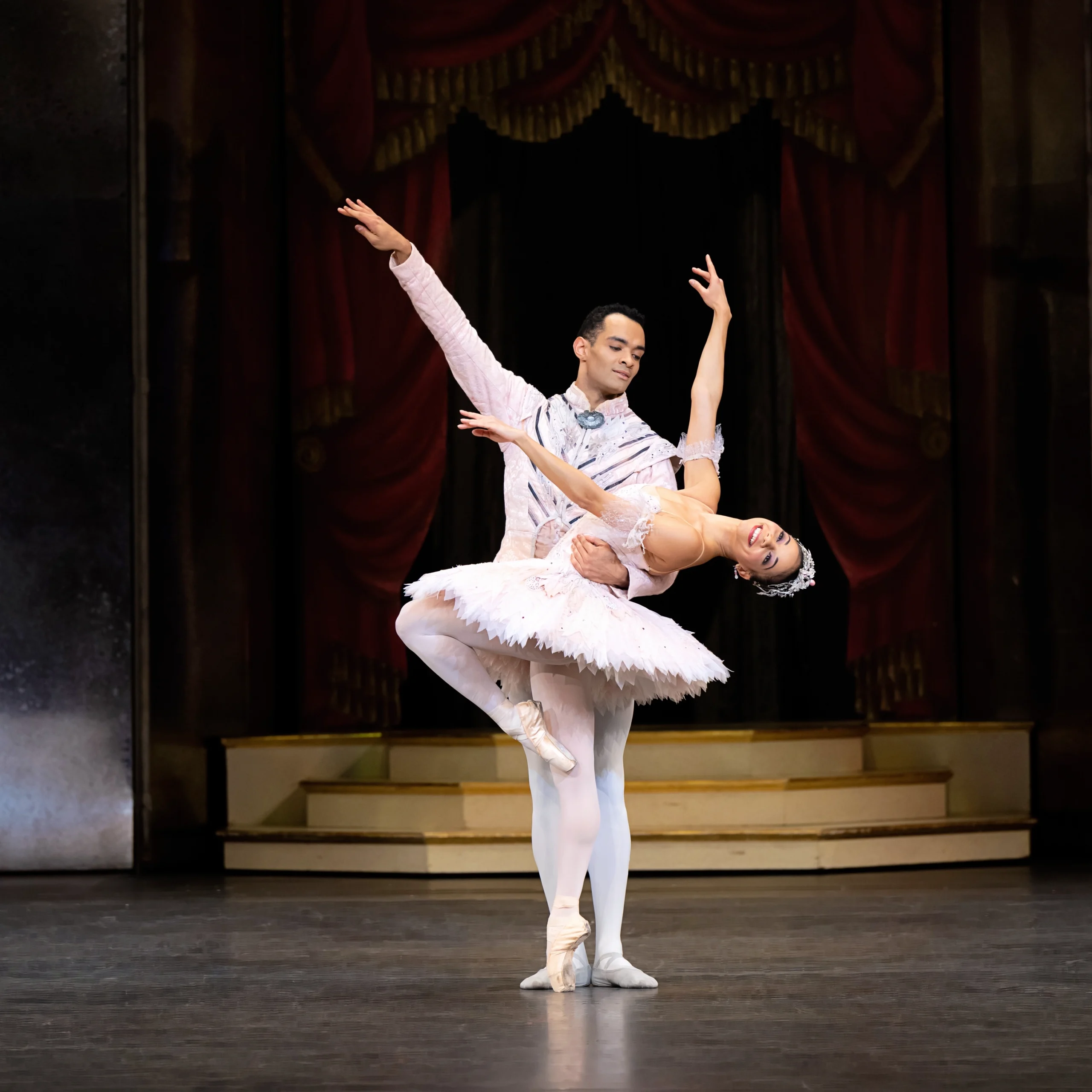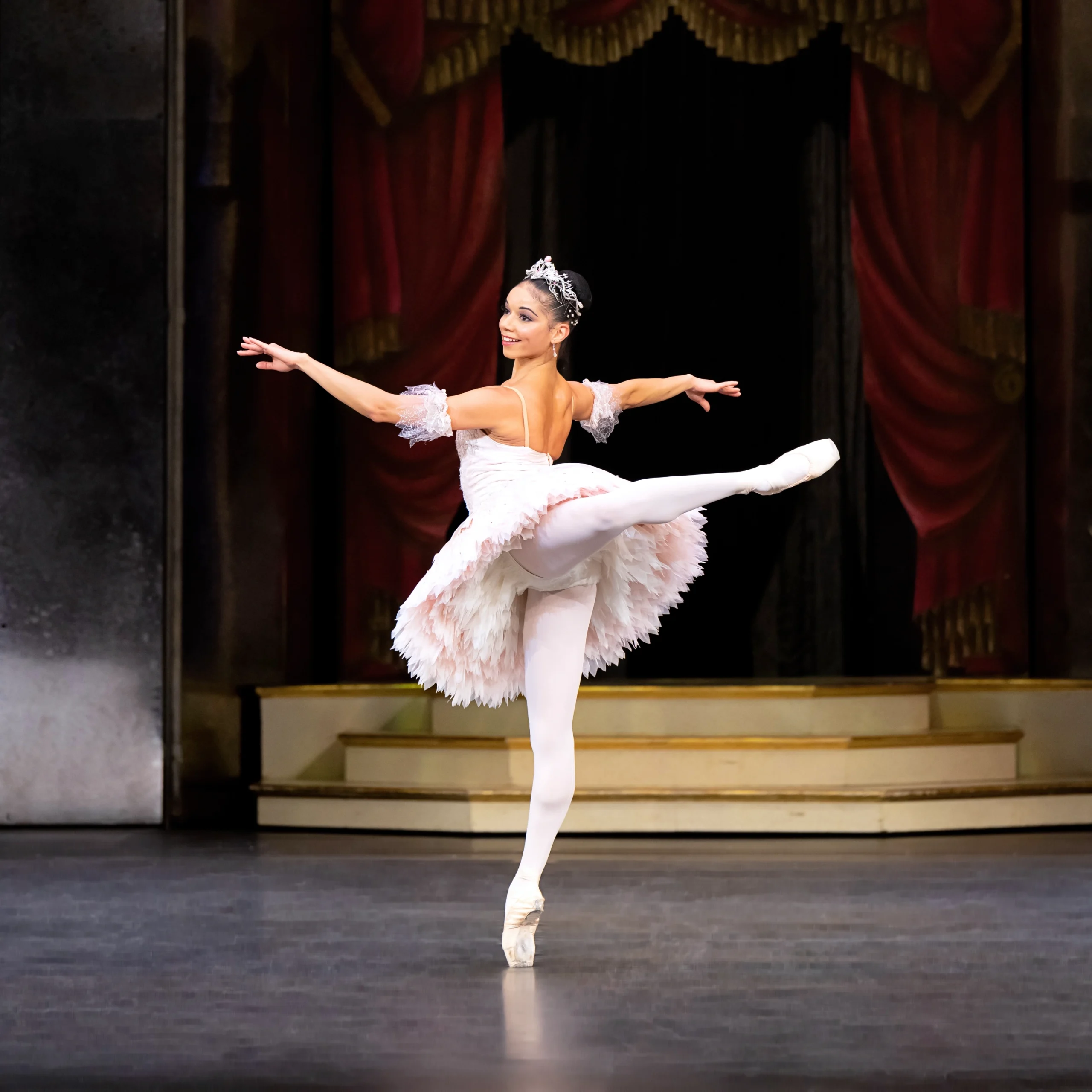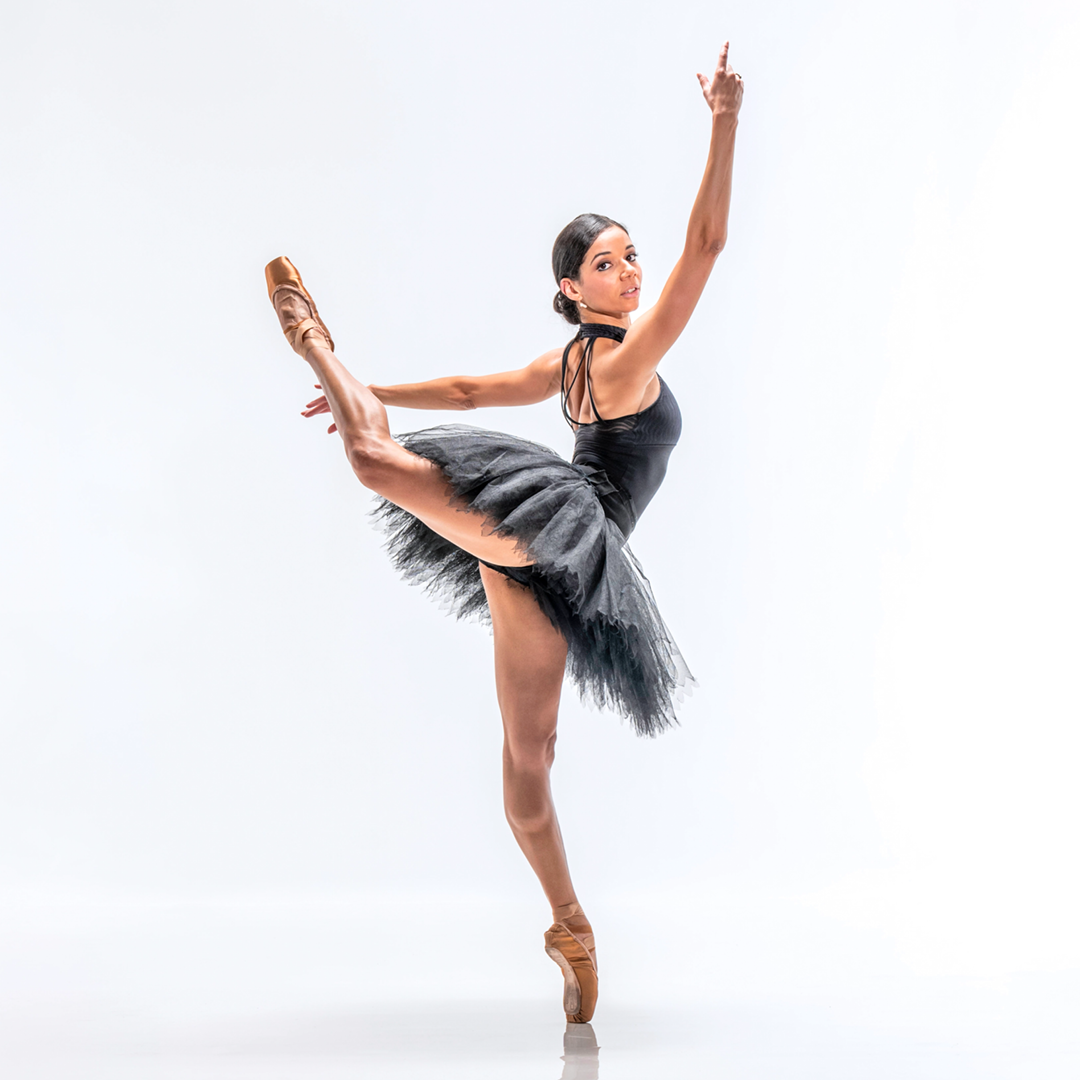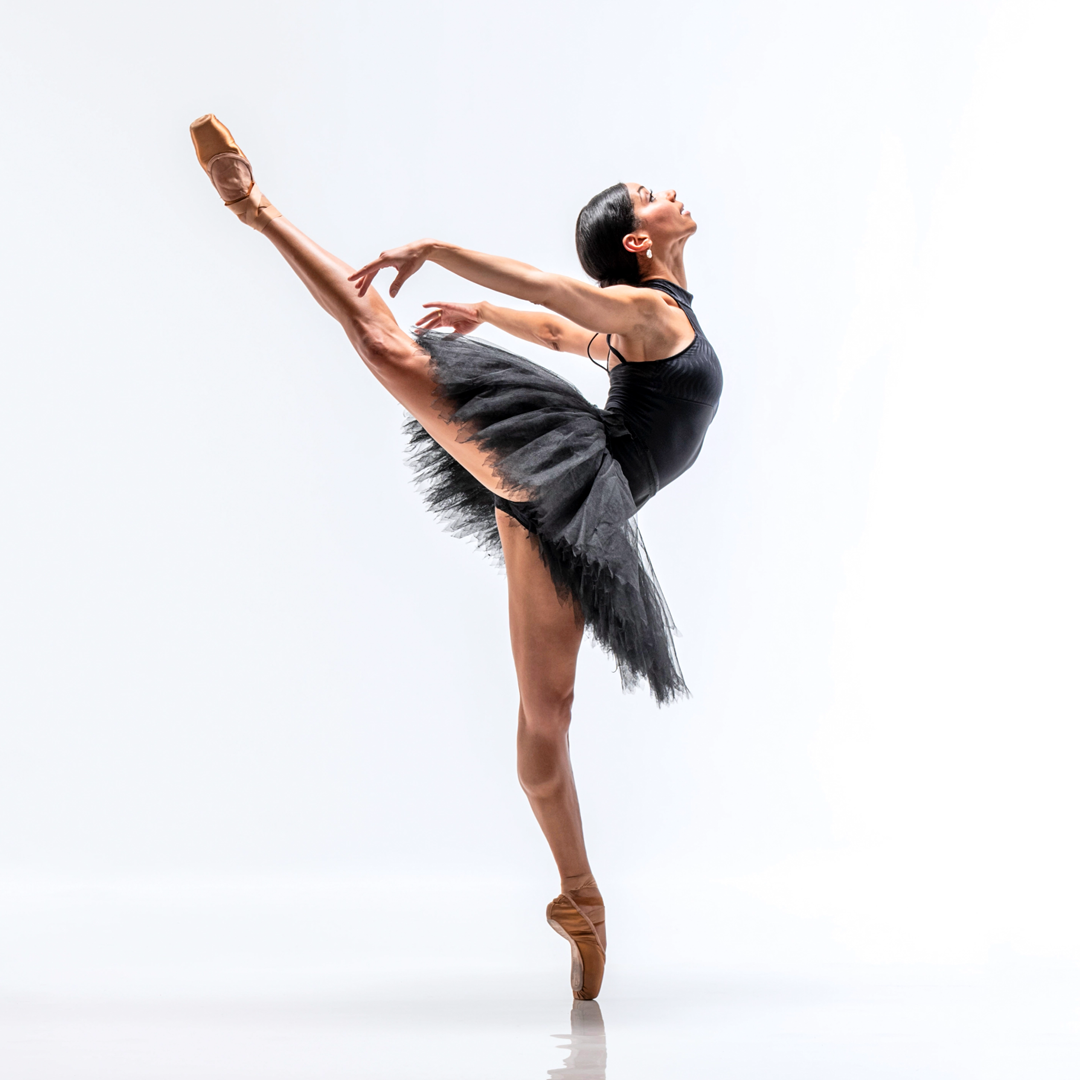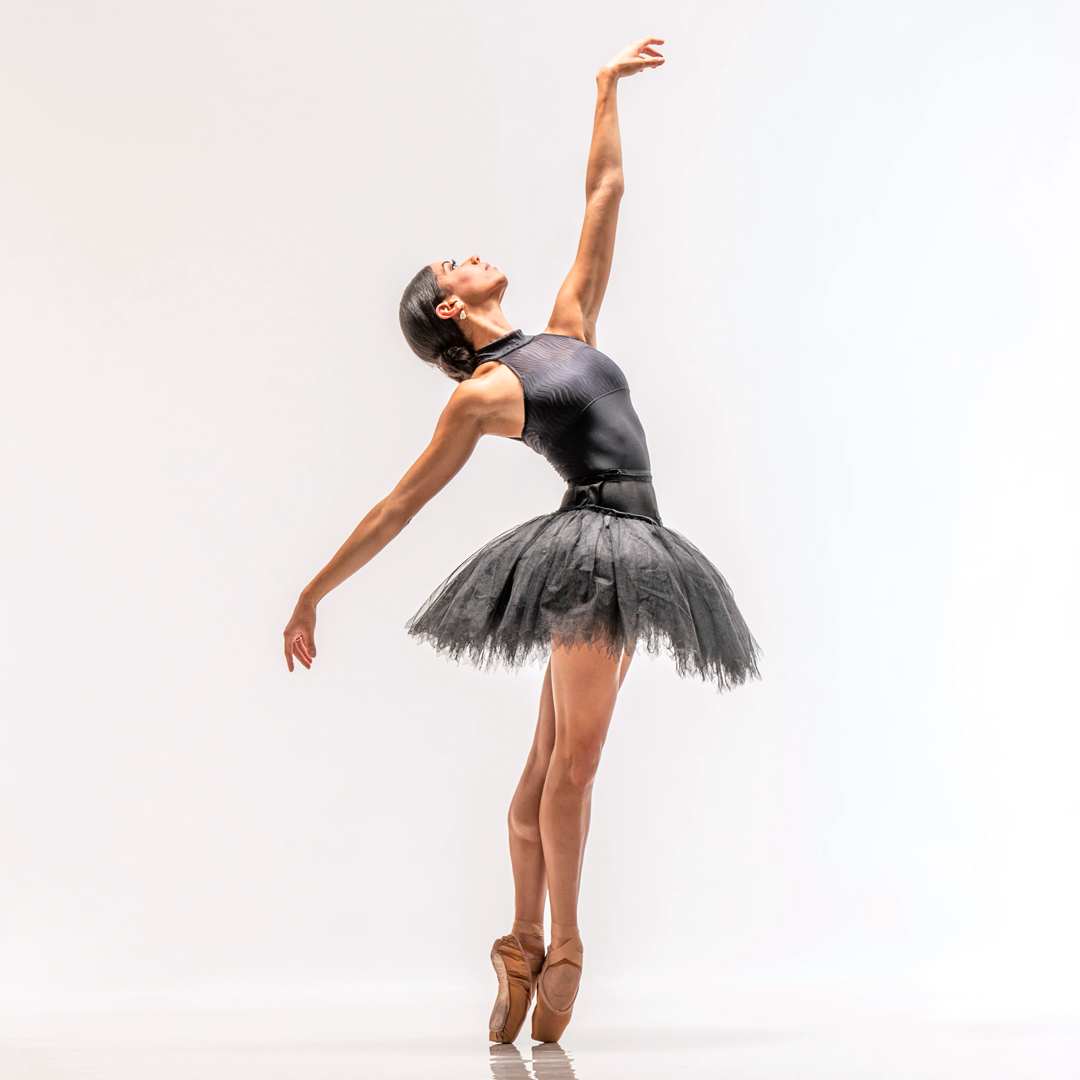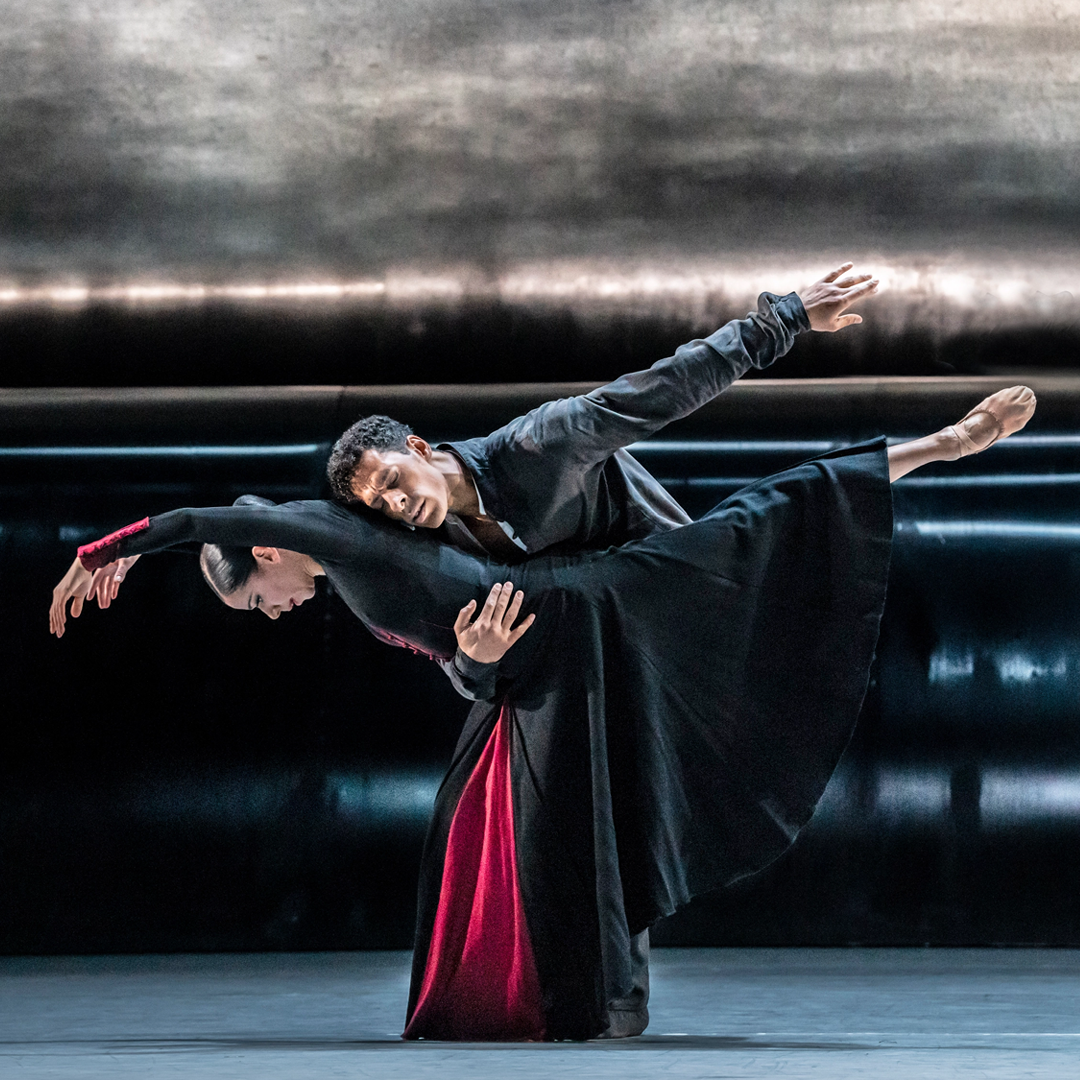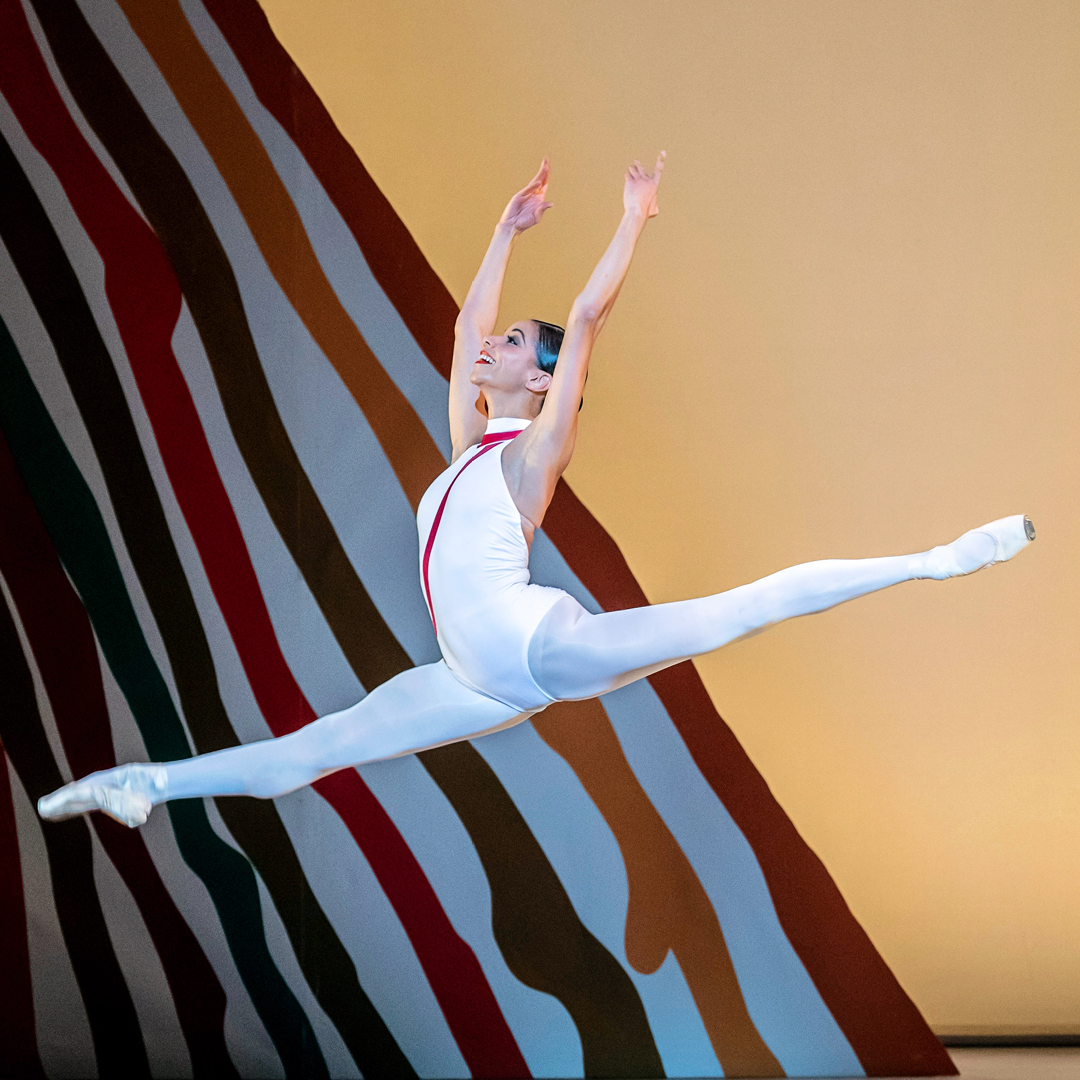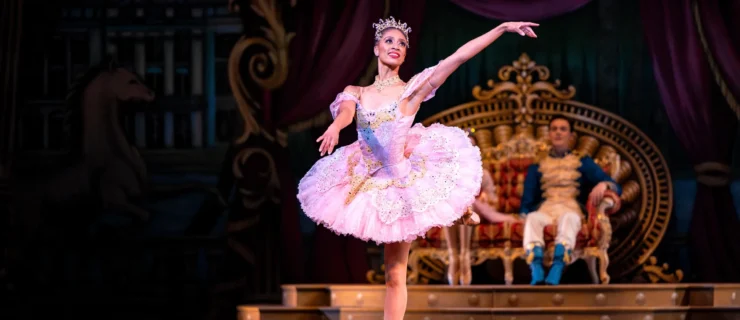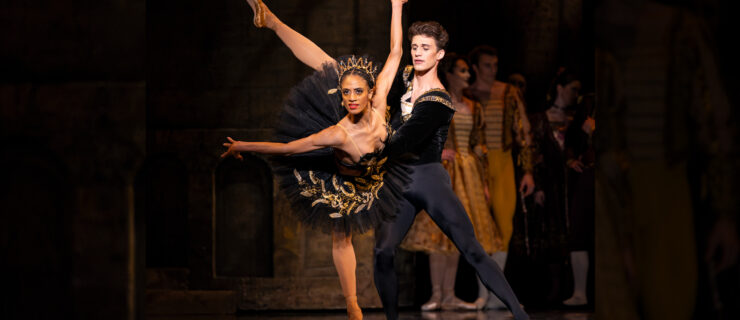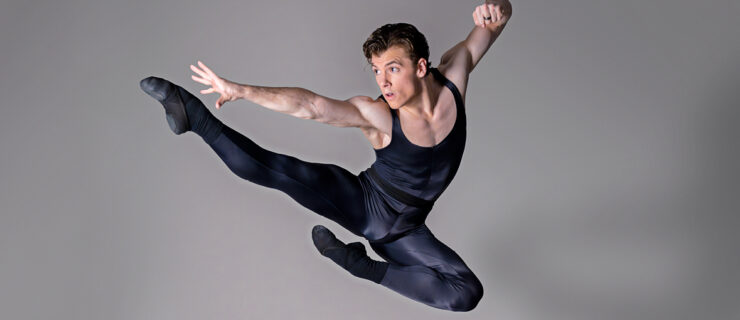Céline Gittens: How the Sublime Birmingham Royal Ballet Principal Is Making a Difference
Céline Gittens bourrées forward and lifts her chin confidently, her arms poised in fifth as the accompanist plays the coda of Nutcracker’s grand pas de deux. It’s a moment of sheer delicacy before she launches into fouetté turns, traveling along the diagonal of Birmingham Royal Ballet’s spacious studio. She pulls into a spectacularly centered quadruple pirouette, finishing with chaînés before calmly posing in tendu. And that’s only in a rehearsal clip online.
Gittens’ balance of power and finesse, and her deep commitment to the roles she portrays onstage, has made her a beloved principal in Birmingham. Her Sugar Plum Fairy in Sir Peter Wright’s Nutcracker is particularly renowned for its radiance. “Céline exudes great confidence onstage and really engages her audience,” BRB artistic director Carlos Acosta said over email in late November. “They know she’s going to deliver a magical performance.”
Born in Trinidad and Tobago and raised partly in Canada, Gittens joined BRB as an artist in 2006. Her talent was quickly recognized, yet carefully and thoughtfully nurtured. In 2012, while a young soloist, she became the first Black ballerina in the UK to dance the dual roles of Odette/Odile in Swan Lake. Since then, she’s taken on most everything in the classical canon, as well as British masterworks, Balanchine, and contemporary ballets like Juliano Nunes’ Interlinked, which BRB performed at New York City Center’s Fall for Dance Festival in October.
“I grew up in such a small town,” Gittens said during an interview at the theater, a few hours before her second Fall for Dance performance. “This past summer I performed at the Royal Opera House with Carlos Acosta for his 50th birthday celebration. I never thought I would be doing that.”
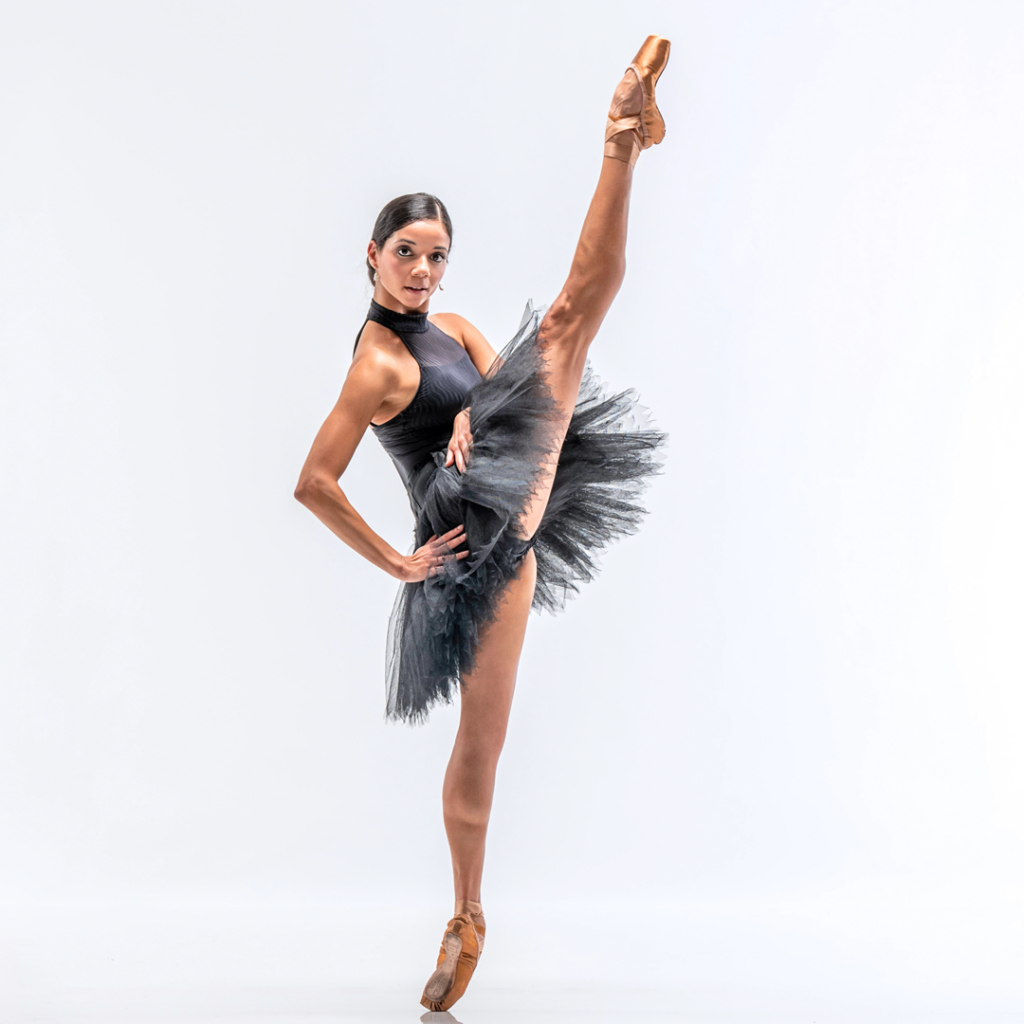
While technically assured and self-possessed, Gittens is quick to credit those who helped her along the way. Now, she is using her platform to support younger generations, initiating a new scholarship in her name through the Royal Academy of Dance to introduce ballet to children who may not otherwise have access to it. “This is my way of giving back,” said Gittens.

A Strong Foundation
Gittens grew up in Trinidad’s small, southwestern town of Point Fortin until age 9. Island life was carefree, connected to nature. “I had a very easygoing childhood,” she said.
Her mother, who had trained in the Royal Academy of Dance method in the UK, opened a dance school, essentially introducing ballet and RAD exams to Port Fortin. Gittens started ballet classes with her at age 3. “I remember one of the first exercises was picking seashells off the beach—really sweet stuff.”
In December 1997, her parents moved the family to Vancouver, British Columbia. After settling in, Gittens resumed ballet lessons with her mother at a local studio. At age 14, she entered Vancouver’s Goh Ballet Academy, shifting to Vaganova-based training with co-founders Choo Chiat Goh and Lin Yee Goh, and coach Lin Mei Fang. “I was there for four intense years—it definitely built my stamina and endurance,” she said.
Gittens also continued studying the RAD syllabus with Lynette Kelly and taking examinations, earning its highest honor, the Solo Seal. In September of 2005, she entered RAD’s Genée International Ballet Competition (now The Fonteyn), becoming the first Canadian to win gold. A few months later, she attended the Prix de Lausanne, where she was a finalist.
At her mother’s encouragement, Gittens started thinking about pursuing a career in the UK. “My mum had watched Royal Ballet, she’d seen Sadler’s Wells [now BRB], so she knew their style and rep. Plus, I had the RAD training.”
Birmingham Beginnings
Gittens and her mother flew to the UK in 2006. While visiting family friends in Birmingham, they stopped by the BRB studios, on the off chance that the touring company was in town. Gittens was given permission to take company class that morning, which was observed by senior artistic staff. “Word got out that someone was auditioning, and during center the artistic director, David Bintley, came to watch.”
Bintley offered her an artist contract after class, and she moved to Birmingham later that year. While she was thrilled, her first season came with big adjustments. Most of the other young corps members had gone to company-affiliated schools in the UK and had experience performing in major productions alongside professional dancers. “There is different etiquette in the company with respect to levels, and I had to learn that really quickly.”
She also had to adjust to BRB’s grueling tour schedule. (The company will spend nine weeks on the road in 2024.) “We travel, and then the next day we’ll have rehearsal and then a performance. As a corps member I really struggled with the constant change of atmosphere, and would be in awe of the principals doing these tough, tough roles.”
Gittens would soon get the hang of it, though, and by her second year, Bintley assigned her a major opportunity: covering Odette/Odile. “It was nice to learn it without the stress of having to perform it at such a young age,” she remembered. “It was enough for me to understand that they trusted me.”
She steadily ascended the ranks, with promotions to first artist in 2009 and soloist in 2011. “The stage time that I had in the corps helped greatly, and balancing corps and soloist roles in the same production helped me build stamina and learn time management,” she said. “All of these things are building blocks for becoming a better principal dancer.”
Gittens credits Bintley with facilitating her career. “He understood I had talent, but didn’t give me too much too soon,” she said. “When I was promoted to first artist, I told him I wanted to be a principal dancer. He said, ‘You will be, and I will help you get there.’ I remember that really clearly. There was so much more he wanted me to learn.”
That included BRB’s more understated style. “He wanted me to take on that less-is-more British finesse, especially for classical roles, while still hanging on to my ‘North American-ness,’ ” she said with a laugh.
She took Bintley’s advice, and when Swan Lake came back into the repertoire in 2012, he cast her as Odette/Odile. Her debut at the Birmingham Hippodrome with frequent partner Tyrone Singleton drew national press attention. But she was ready, and excited for what their performances would mean for younger Black dancers. “Making history like that was really inspirational for future dancers who look like me, and who want to understand this art form for all the positive things it can lead to,” she said.
New Responsibilities
Gittens continued building her repertoire, rising to first soloist in 2015 and principal dancer in 2016. She was thrilled, but knew her promotion came with big responsibility. “You can’t stop and be stagnant as a principal. You represent the company, so you need to act professionally and serve as an example.”
She describes herself as focused in the studio. She has deep reverence for BRB’s répétiteurs, many of whom learned roles directly from Sir Kenneth MacMillan and Sir Frederick Ashton. She’s particularly fond of former assistant director Marion Tate, who taught her the bulk of her classical repertoire. “She was the queen of storytelling,” Gittens said, “and her openness in rehearsals transfers so well into me and into my performances.”
After Bintley retired, Acosta came on as artistic director in early 2020. Gittens was excited to work with the Cuban star, but within a few weeks the COVID-19 lockdown halted rehearsals. Acosta quickly pivoted; he asked Gittens to dance The Dying Swan for a short virtual performance he was arranging, with rehearsals over FaceTime. “It was quite emotional—we were one of the first companies to get something online,” she said.
Now, after three years of working together, Acosta is impressed by Gittens’ leadership and focus. “Céline is a joy to work with in the studio—she absorbs feedback and has great attention to detail,” he said. “She sets a tremendous example to other dancers through her work ethic and has been a great ambassador for BRB.”
In turn, Gittens is enjoying Acosta’s bold programming. When asked about BRB’s recent premiere of Black Sabbath: The Ballet, based on the songs of the titular heavy metal band, she smiled. “We received standing ovations every night. Sixty percent of our audience on opening night had never seen a ballet before—that’s exactly what we were trying to do!”
Providing exposure and education to ballet is part of what drives Gittens. She recently became patron of Trinidad’s Metamorphosis Dance Company, which showcases ballet, modern, and Afro-Caribbean dance. And last spring she created a new Introduction to Dance Scholarship through RAD, of which she is an international ambassador. The funds allow RAD-registered teachers to provide tuition-free lessons to new students in their community who might not otherwise have access to dance. “It’s strongly based on my past experience with seeing how much impact my mum had in the south of Trinidad, and how dance has opened up so many avenues for the population—not just with learning dance, but with skills that can be transferred into other careers,” she said.
Gittens has many years of performing ahead of her—she’d love to dance more works by Balanchine and Ulysses Dove—but she knows she wants to continue motivating and encouraging other dancers in the future. “I always reflect on the support that I have had throughout my career and am so grateful,” she said. “It is the most wonderful thing when someone else believes in you and truly wants to see you succeed.”
